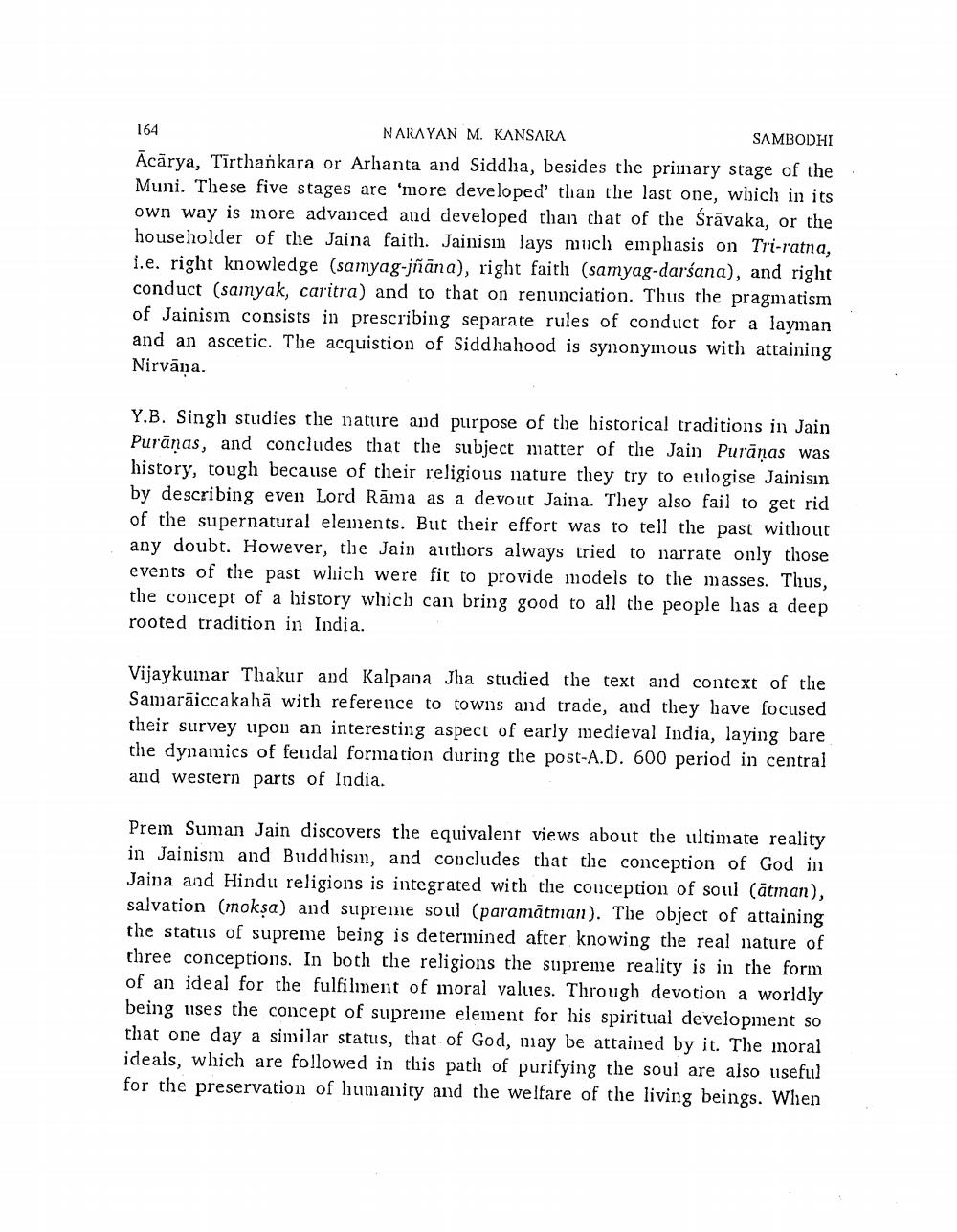________________
164 NARAYAN M. KANSARA
SAMBODHI Ācārya, Tirthankara or Arhanta and Siddha, besides the primary stage of the Muni. These five stages are more developed than the last one, which in its own way is more advanced and developed than that of the Śrāvaka, or the householder of the Jaina faith. Jainism lays much emphasis on Tri-ratna, i.e. right knowledge (samyag-jñāna), right faith (samyag-darśana), and right conduct (samyak, caritra) and to that on renunciation. Thus the pragmatism of Jainisin consists in prescribing separate rules of conduct for a layman and an ascetic. The acquistion of Siddhahood is synonymous with attaining Nirvana.
Y.B. Singh studies the nature and purpose of the historical traditions in Jain Purānas, and concludes that the subject matter of the Jain Purāņas was history, tough because of their religious nature they try to eulogise Jainisin by describing even Lord Rāma as a devout Jaina. They also fail to get rid of the supernatural elements. But their effort was to tell the past without any doubt. However, the Jain authors always tried to narrate only those events of the past which were fit to provide models to the masses. Thus, the concept of a history which can bring good to all the people lias a deep rooted tradition in India.
Vijaykumar Thakur and Kalpana Jha studied the text and context of the Samarāiccakahā with reference to towns and trade, and they have focused their survey upon an interesting aspect of early medieval India, laying bare the dynamics of feudal formation during the post-A.D. 600 period in central and western parts of India.
Prem Suman Jain discovers the equivalent views about the ultimate reality in Jainism and Buddhism, and concludes that the conception of God in Jaina and Hindu religions is integrated with the conception of soul (ātman), salvation (mokşa) and supreme soul (paramātman). The object of attaining the status of supreme being is determined after knowing the real nature of three conceptions. In both the religions the supreme reality is in the form of an ideal for the fulfilment of moral values. Through devotion a worldly being uses the concept of supreme element for his spiritual development so that one day a similar status, that of God, may be attained by it. The moral ideals, which are followed in this path of purifying the soul are also useful for the preservation of humanity and the welfare of the living beings. When




